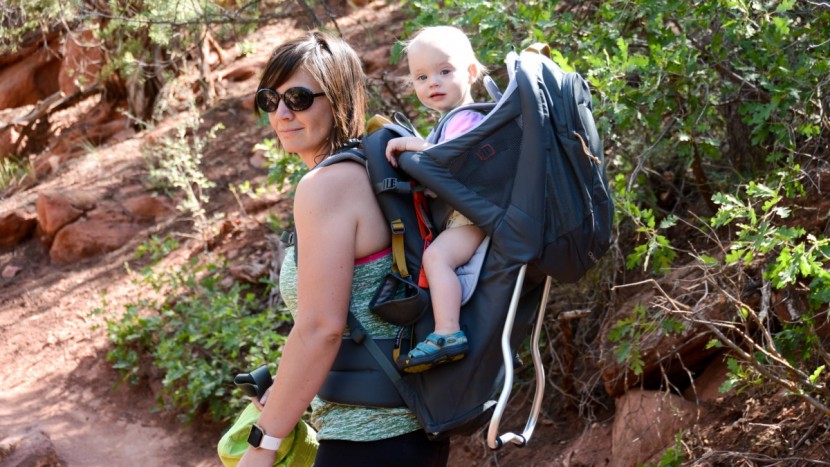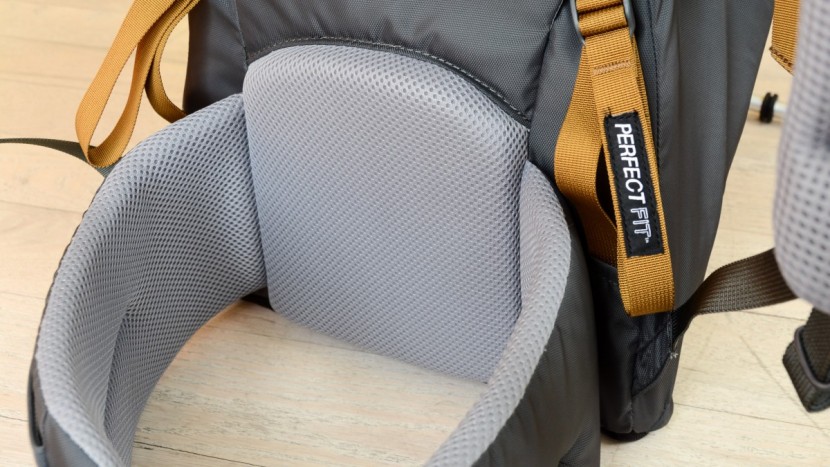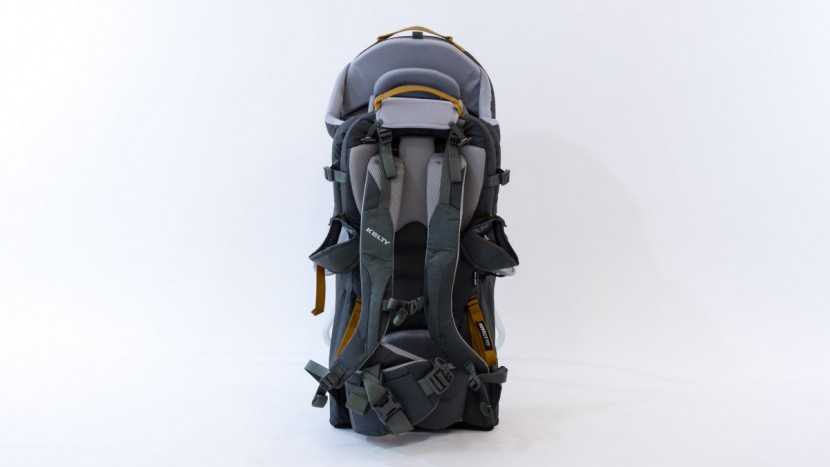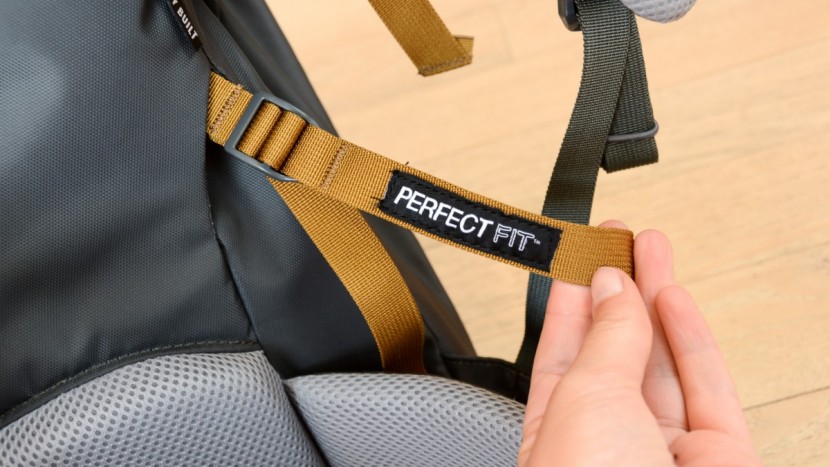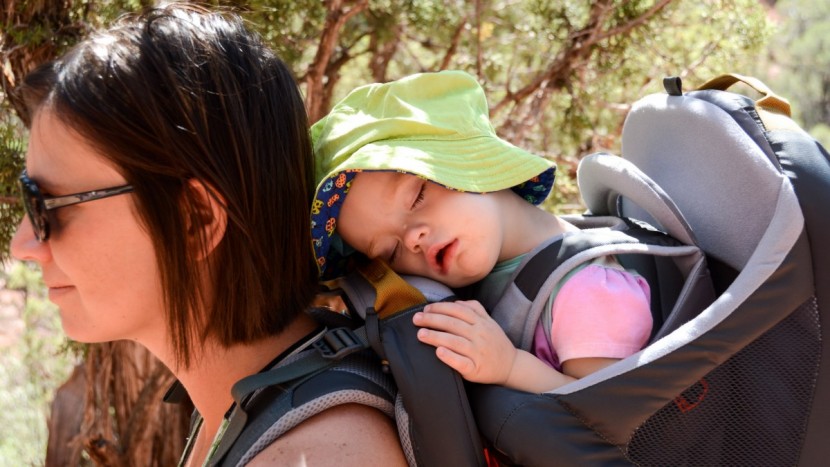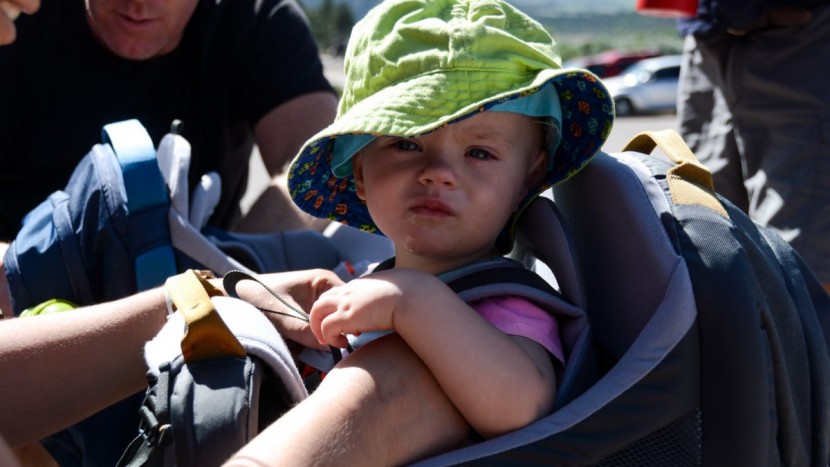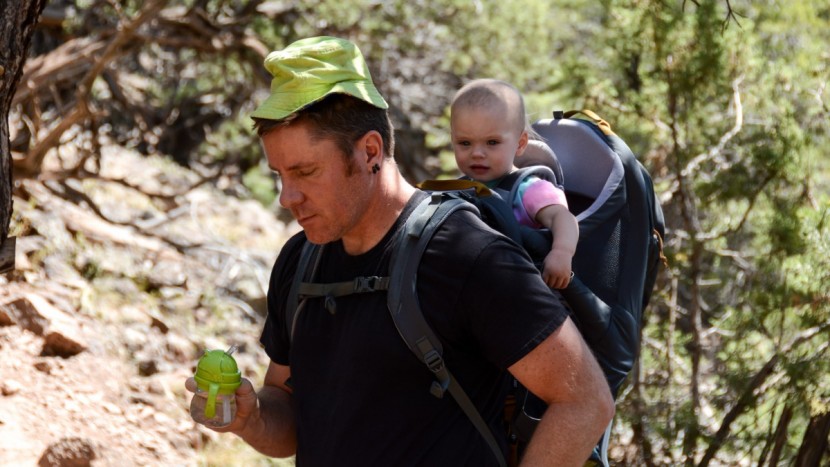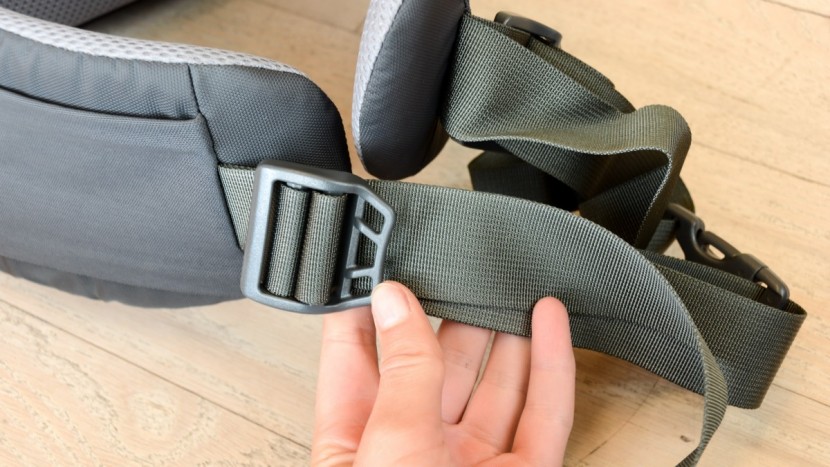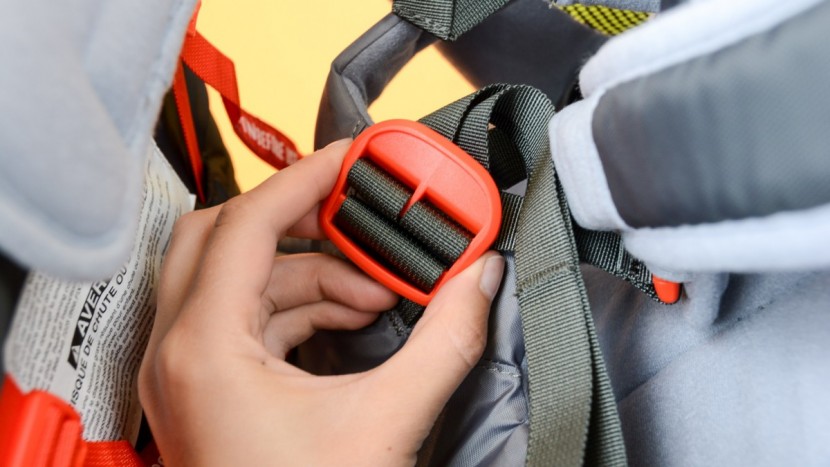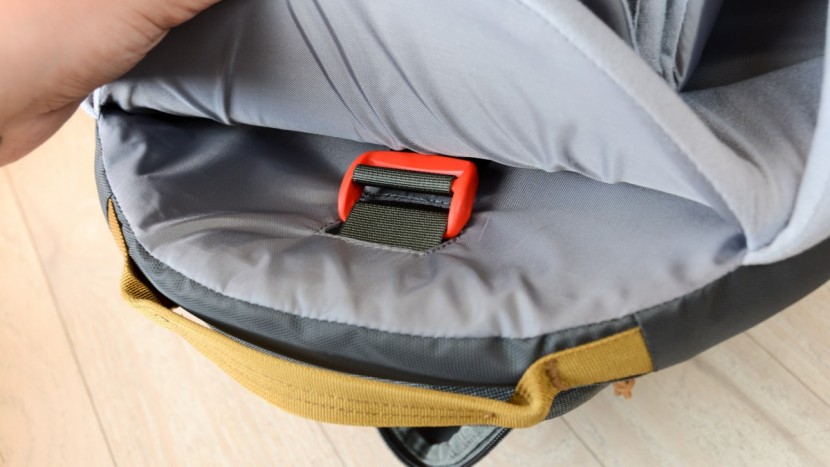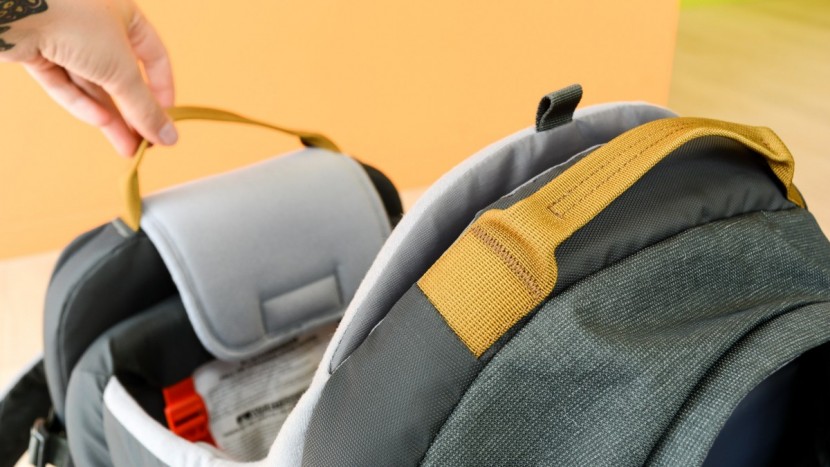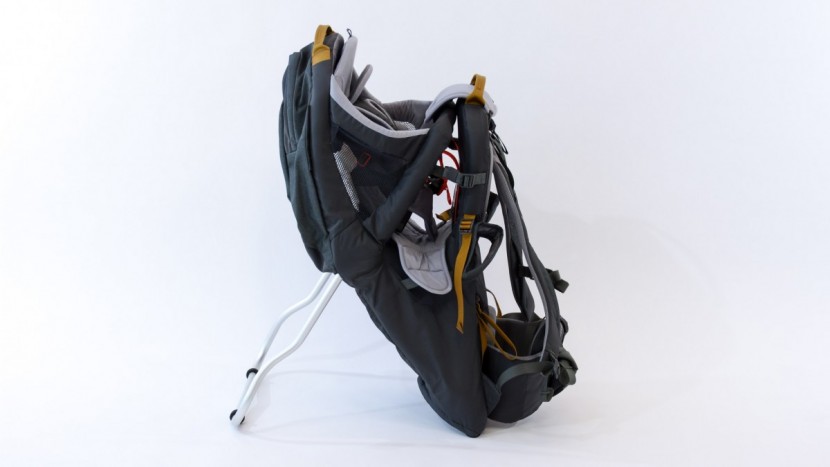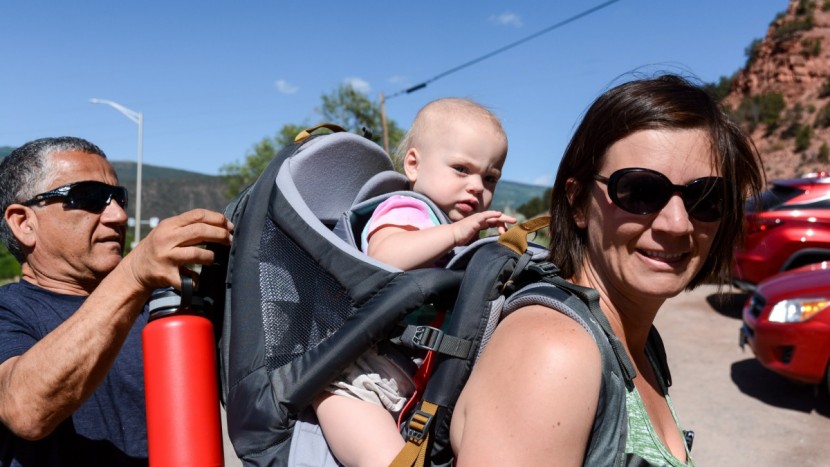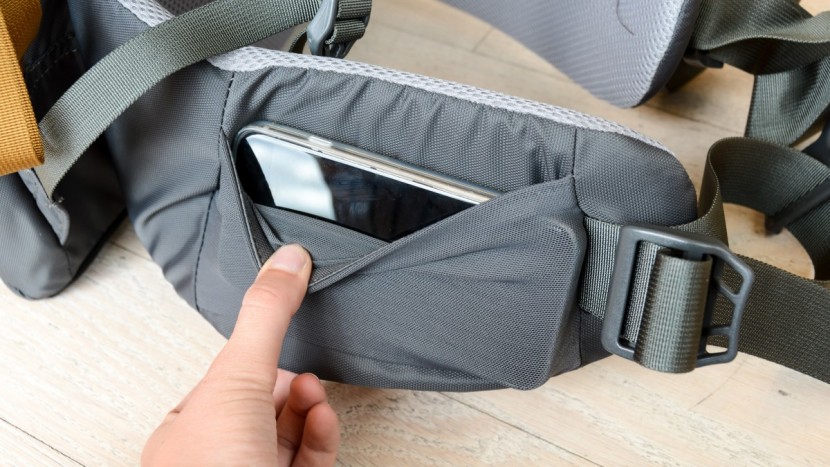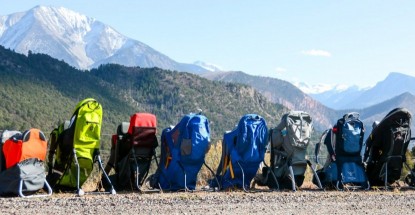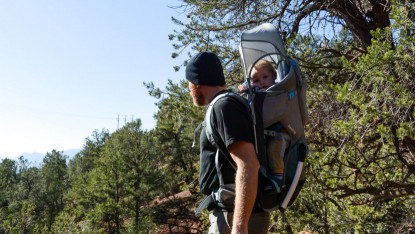Kelty Journey PerfectFit Review

Our Verdict
Our Analysis and Test Results
In 1952, Dick Kelty began making backpacks in his garage for friends. He made welded frames while his wife sewed. Kelty backpacks were utilized by the First American ascent on Mount Everest West Ridge in 1963. By the late 70s, Kelty was making Gore-Tex clothing and six new daypacks. In the early 90s, Kelty began creating child carriers. By 1999, Kelty expanded the kid carrier line to 6 designs.
Parent Comfort
The PerfectFit is significantly more comfortable to wear than the previous Kelty base pack.
This pack is a comfy fit with nicely padded straps and a thick waistband (below left) with enough adjustment to sit on your hips. Both straps have a stiff structure to help support the baby's weight but it isn't as substantial as other Keltys.
The shoulder straps aren't as adjustable as some of the competition, but they do have the load lifter adjustment (above right) that allows some of the weight of the pack to rest more on your hips than shoulders.
The back of the PerfectFit is padded and covered in breathable material, but the design isn't as breathable as the competition that offers channels for airflow. The lack of flow could lead to a sweaty back.
The torso adjustment is easy to manage and has a range of 4.5 inches, which should be enough for those of average height. Despite the range and the ability to adjust on-the-go, shorter users might end up with the bottom of the carrier resting on the top part of the rear end, while taller users can feel like the torso isn't long enough for all-day comfort.
Child Comfort
The PerfectFit is equally comfortable for little passengers.
Child comfort is critical to keeping little ones content and preventing discomfort related to crying and shifting. All of the cockpit and harness adjustments on the PerfectFit operate smoothly, even with the baby in the seat.
The cockpit has padded shoulders in the 5-point harness, and the adjustment doesn't impede comfort and it has covered hard clips. The cockpit is roomy enough for movement but not so roomy that the passenger is floppy or feels like they will fall out. The seat is well-padded and substantial with a structure that doesn't fold under the baby's weight. It has padding where the legs come out making it more comfortable for hanging legs. The seat is easier to raise up than lower, so it may be easiest to make large adjustments before you put your baby in the pack.
The face pad is cushioned and covered in soft fabric. It is somewhat angled for a more ergonomic napping position when little ones fall asleep and fall forward. The pad is removable for easy cleaning which it will regularly need after napping or eating. You can feel the frame under the pad, but it isn't as significant as some of the competition.
The PerfectFit has stirrups unlike its predecessor, and while not all children use them, it is nice to have the option to prevent dangling legs.
This pack does not come with a canopy, so we urge parents to consider purchasing the canopy listed in accessories below or ensure that little ones are wearing sunhats to prevent sun exposure.
Ease of Use
The PerfectFit is also easier to use than the pack it replaces and much of the competition.
Adjustment of the shoulder straps move smoothly, and the buckles work well with on-the-go adjustability. The torso strap is adjustable when the pack is on, and the waistband is also smooth with a clasp you can operate with one hand in a forward pull motion that requires less effort than back pul designs.
Both the chest clip (above left) and waistbelt (above right) can be adjusted on the go. They have smooth moving belts, and the buckles work well on both.
To adjust the child harness, you use the single internal buckle adjustment (above left) to tighten and loosen. This process is easy to do even with a baby in the cockpit. Moving the seat up and down is done with the adjustment slide on the back of the pack in a pocket behind the seat back (above right). It is easier to raise the seat than to lower it.
This pack has double carry handles on the front and back of the carrier. It is lightweight and the handles work well. The leg brace pops out from the back and creates a stable base.
Storage
The PerfectFit has more pockets than the previous base model but not as many as some competitors.
Multiple and versatile storage options can be the difference between a short jaunt and a more extended hike. If you don't have enough space for your supplies, you'll be taking a shorter trip or carrying an extra pack. This pack does not have water bottle storage or a place for a hydration bladder.
The main storage option on this pack is located on the back with only one waistband pocket within reach of the wearer. The waistband pocket is small with an elastic top and no zipper. It is large enough to fit the average size smartphone, but without a zipper, it could potentially fall out while hiking.
The PerfectFit has one large compartment that is similar in size to the combination of the two compartments found on the PerfectFit Elite. It is large enough to hold most of the supplies you'll need for hiking. However, with a lack of internal dividers or pockets, it can be an organizational nightmare that requires significant searching to find what you are looking for. You'll need help accessing the contents, or you'll have to remove it to reach your supplies.



